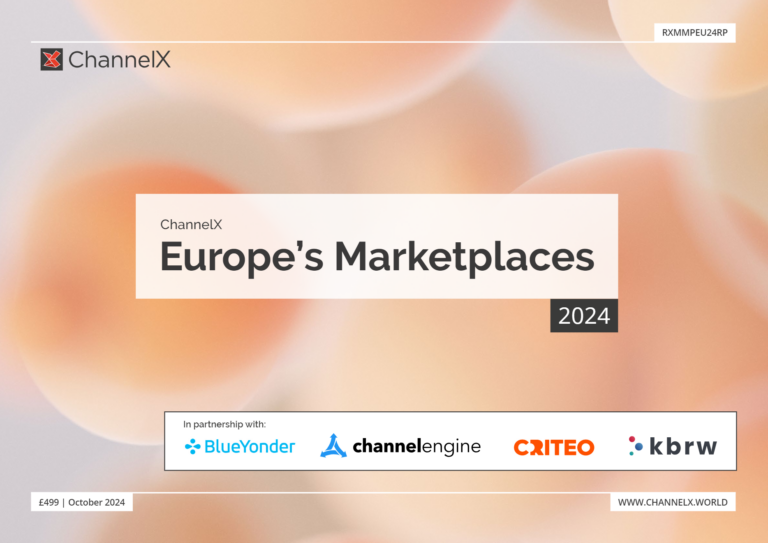There is a globally recognised need to move toward greater circularity if, as a society, we are to live within planetary boundaries and enable future economic growth. As a tool to create transparency and enable circularity, the European Commission (EC) is proposing the implementation of digital product passports (DPPs) that share product and traceability information across the entire product lifecycle.
Details of the EC’s draft regulation on DPPs will be published in December this year, with final approval expected in 2024, and implementation for the first product groups set for 2026/7. Once in place, any brand that wants to sell a product in the EU (including those sold online) will have to comply. However, many elements in the draft regulation regarding scope, technology, and data currently remain open with different levels of maturity.
That said – or arguably, for precisely that reason – organisations cannot afford to wait. Unlocking DPP-enabled transparency early will ensure preparedness for the regulation, while supporting macro-level measures to decouple economic growth from resource extraction, waste streams, and carbon emissions. As such, Lee Metters, group business development director, Domino Printing Sciences, outlines what the implementation of DPPs means for businesses and where to get started to stay ahead of the curve.
What are digital product passports?
Digital product passports are proposed tools for collecting and sharing product data throughout a product’s lifecycle, used to illustrate its sustainability, environmental, and recyclability attributes. A DPP is essentially a product-specific data set, that would structure regulatory and discretionary disclosure attributes. It can inform consumers and other stakeholders in the product lifecycle on a product’s origin, material composition, repair, and disassembly options, as well as how the various components can be recycled. The European Commission is proposing the application of DPPs to support the circular economy, decarbonisation, sustainability, and to create transparency by making product information available across the entire value chain. Once in place, DPPs will assist with further legislative enforcement, including extended producer responsibility.
The initial focus for DPPs in the EU will be:
- Sustainable batteries
- Packaging and packaging waste
- Construction products
- Critical Raw Materials
- Detergents and Surfactants
- Toy safety
There are a number of EU regulations currently in place that support the use of DPPs in these areas, including:
- Ecodesign for Sustainable Products Regulation (ESPR): The proposal, published on 30th March 2022, establishes a framework to set ecodesign requirements for specific product groups (excluding food and feed) to significantly improve their circularity, energy performance, and other environmental sustainability aspects. Once in place, the regulation will prohibit items that do not meet requirements, such as disposable vape pens, from being placed on the market.
- Construction Products Regulation (CPR):Sets functional, safety, and environmental standards for construction products in the EU. For example, validation of building projects with an innovative approach to sustainability by evidencing they are tackling whole-life carbon and promoting circularity.
- (New) EU Battery Regulation: Will regulate the entire life cycle of batteries – from production to reuse and recycling – and ensure that they are safe, sustainable, and competitive. When enforced, this regulation would help eliminate the vast number of fires currently occurring in dustcarts and waste processing centres caused by batteries being thrown into household rubbish.
Whilst still nascent, adopting DPPs early offers clear benefits to businesses, such as increased consumer trust, regulatory compliance, increased visibility and traceability of products, and broader engagement with global sustainability goals.
The Ecosystem Digital Product Passport (CIRPASS) prepares the ground for gradual piloting and deployment of DPPs in Europe.
What might a DPP include?
With the regulation still in draft format, speculation remains about the final data requirements for a DPP. However, it is almost guaranteed that any digital passport will include the following elements:
- Basic product data, such as name, weight, batch number, manufacturing date and site, and warranty details;
- Material data, including raw material and component origin, suppliers involved in the sourcing process, certifications for ingredient provenance (e.g. sustainable palm oil), the percentage of recycled content;
- Traceability data: product history, chain of custody, details on current and past owners (particularly for long-lasting products that can be resold);
- Repair and recycling data: information about the overall repairability of the product, plus specific repair events and instructions for end-of-life disposal. Such data would be relevant for manufacturers dealing with warranties, general repairers, and recycling centres;
- Sustainability data, e.g. a product’s carbon footprint, water use, and land/ sea/ air miles travelled.
From a consumer perspective, access to this data would allow an individual to compare products on the supermarket shelf based on ingredients, carbon emissions, or other information that might be of personal or lifestyle value and make an informed choice about the products they endorse. It may include information on returns, manufacturer contact details, or instructions on how to prepare a product and its packaging for recycling. This is particularly relevant when we consider that 91% of all plastic waste is still not recycled by consumers, much of which ends up in landfills.
Similarly, the benefits extend to businesses, with manufacturers more easily able to track faults or issues back to their source and enable alerts to be issued on other products that may have a similar issue. And, at the end of a product’s usable life, DPPs can be used to create a picture of how much waste is being caused by a particular product, product range, or manufacturer – enabling them to address causes of waste and contribute positively to sustainability and net zero goals.
Adopting the digital product passport
Manufacturers are unlikely to be able to afford to wait for the draft regulation to be finalised before starting to take steps to adopt the DPP. The DPP will require a database to store all product information, with a separate code to link to information pertaining to individual products. The industry is already working towards a system that will facilitate this, with an emphasis on open-source solutions that allow for collaboration, consistency, and best practice and that will enable existing and new regulations to be easily aligned.
One of the most seamless and globally recognised solutions would be the GS1 Digital Link. Effectively, “the internet in a barcode”, the GS1 Digital Link was introduced as a single-barcode solution to provide access to digital information about a product. Unlike a URL, which typically points to a single, specific website, the GS1 Digital Link can also contain a wide range of business-to-business and business-to-consumer information, making it ideal for applications within the digital product passport, not least because a lot of the data would be duplicated – such as supply chain traceability, product provenance, business partner APIs, patient safety information and more.
Another benefit of applying the GS1 Digital Link is that the information can be readily updated without necessitating a change to the final code. In addition, as GS1 Digital Link-enabled codes ‘resolve’ themselves based on geo-location and what is being used to scan the code, they can be customised to provide the information only in areas where a DPP is required, with the potential to include additional areas as the regulation changes.
Conclusion
The EU DPP is coming – and it will likely be closely followed by legislative requirements in other regions. Manufacturers selling in the EU – and indeed those working in territories and industries not currently covered by the DPP – can get ahead in their preparations by implementing the GS1 Digital Link and provide themselves with the capability to update and enhance the data included over time.
Organisations yet to adopt the DPP – or indeed the GS1 Digital Link – should seek advice from those with expertise in variable data printing to seek early adoption and stay ahead of the curve.









